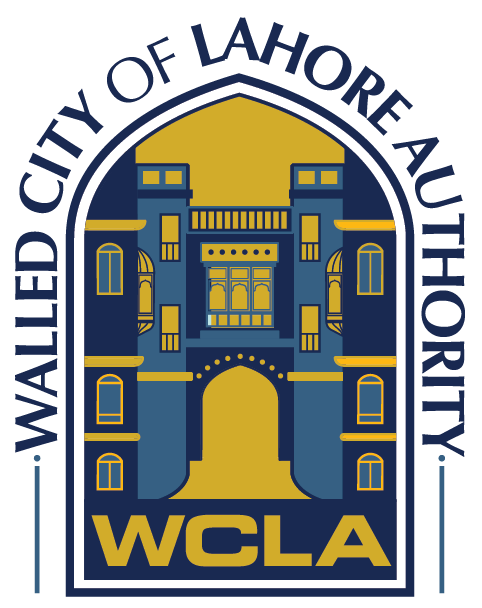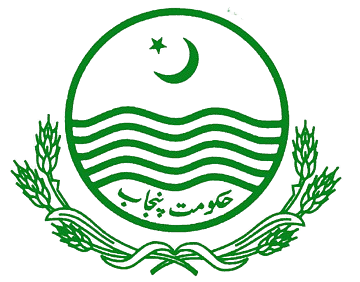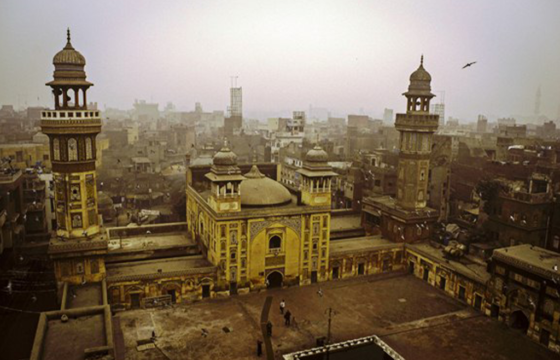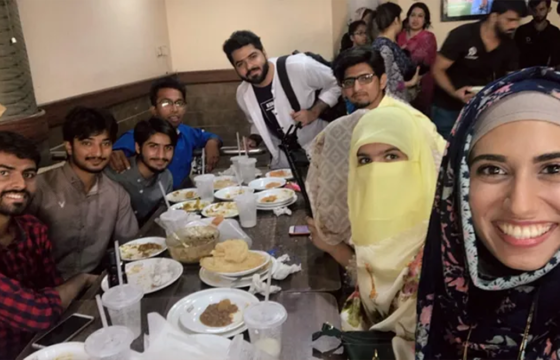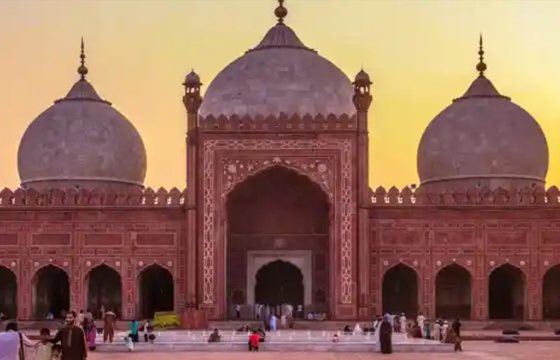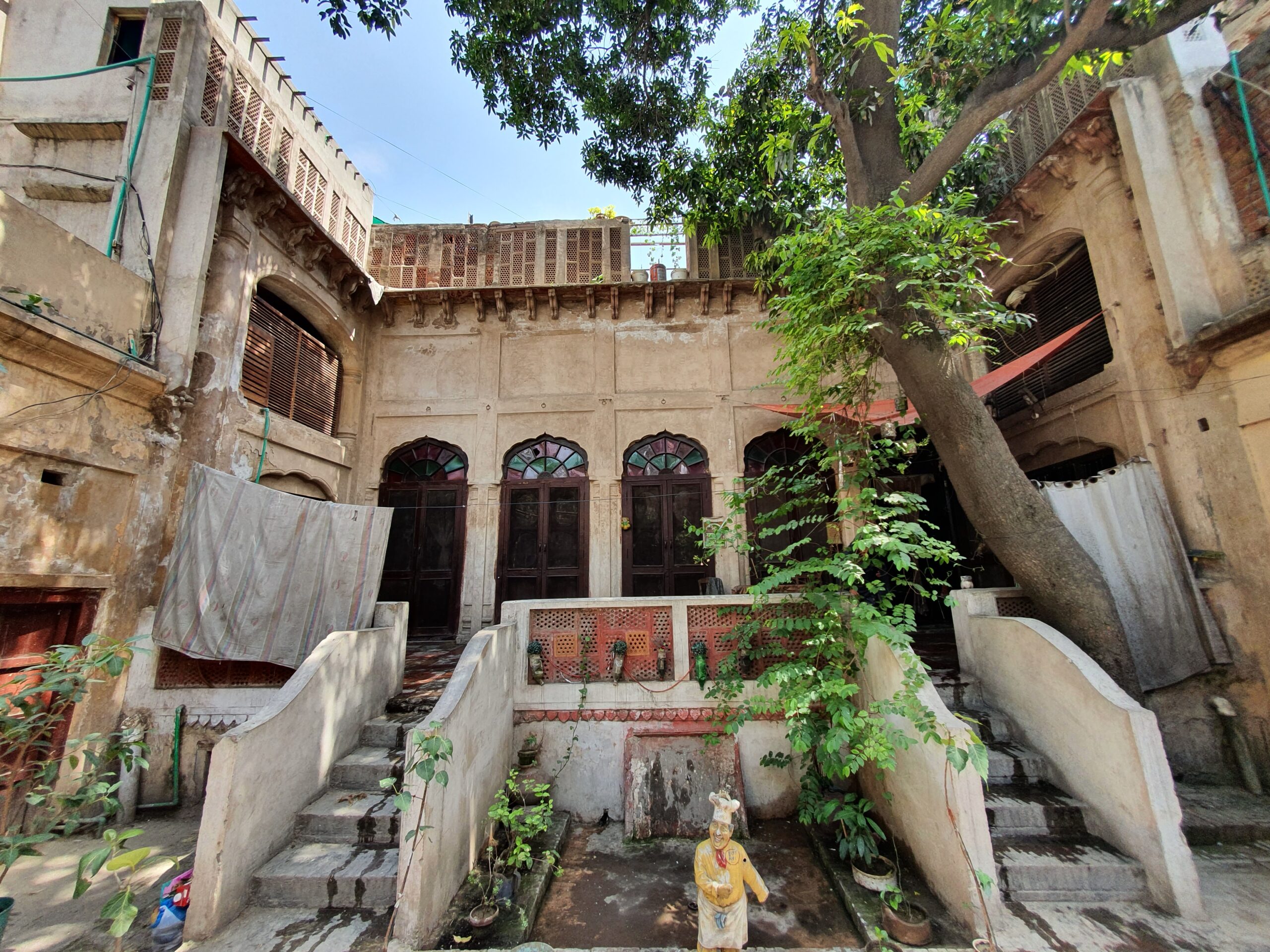

Haveli Dina Nath
Haveli Dina Nath is named after a Hindu Dina Nath. Raja Dina Nath was the courtier of Ranjeet Singh and the civil administrator and counselor of considerable influence at the Sikh court for well over three decades. He belonged to a Kashmiri Pandit family. After partition Haveli Dina Nath was transferred to the family of Khursheed Sahib. At that time 5 families were residing in this Haveli but with the passage of time families moved from there and at present only two families are residing there. A part of the Haveli is under Auqaf and a vocational training center for girls is established there. It is said that an underground tunnel going to India also exist in this Haveli. The structure of the Haveli is a typical Sikh / Hindu architecture. It possesses almost nineteen rooms and two basements including verandas and an open space backyard. The total area covered is 47 Marla. The Haveli is a masterpiece of architecture and heritage.

Haveli of Baij Nath
This haveli, with its lofty upper storey’s, stately rooms and majestic gateways, is situated in the Delhi gate quarters, in Pholon Wali gali, opposite to the haveli of Raja Dina Nath. Haveli Baij Nath is named after a Hindu Baij Nath. In later times, before partition, haveli Baij Nath remained in use as a Marriage House where Baraats coming from long distance stayed and ceremonies were held. The architecture of Haveli Baij Nath has been changed enough till the present day. In old times there was a fountain in the courtyard of Haveli. Moreover there was a room which was used as a Hindu Temple but after partition and according to the needs of residents of this haveli many parts of haveli were changed. It is reported that after partition nearly 50 families were residing here. In 1978 this was sold by its owner and each family bought where it was residing. With the passage of time families shifted from here and now only 20 families are residing here.
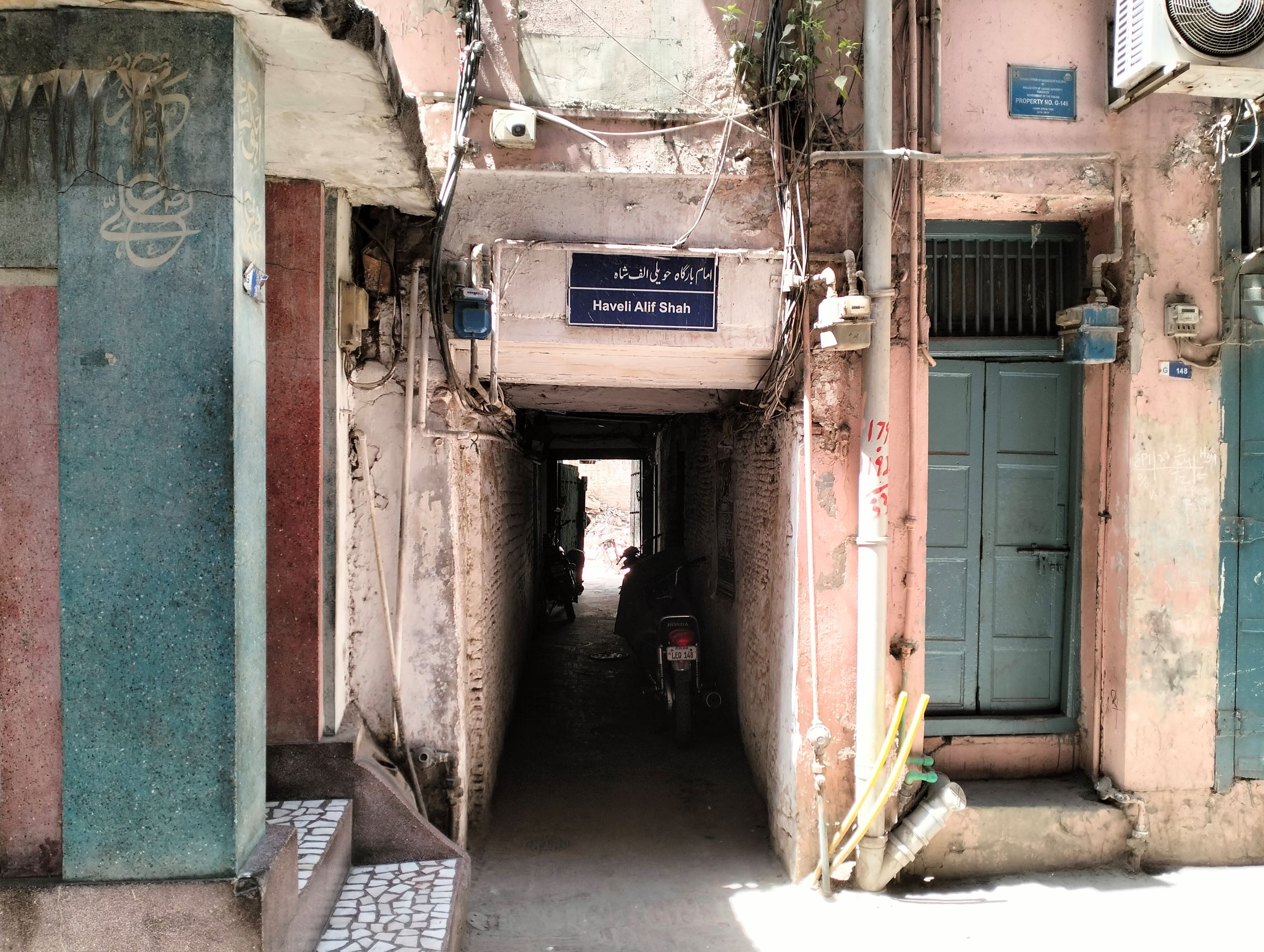
Haveli Alif Shah
Haveli Alif Shah is located inside Dehli Gate, at the end of Gali Surjan Singh. The exact date of its construction is not known. According to the oral history of residents, this haveli belongs to Mughal family and one of the ancestors of this family married to a Mughal princess and got this haveli in dowry. Since then this haveli is in this family. In present days, most of the old structure has been demolished and new construction has been made here. Recent caretaker of this haveli is Syed Ahmad Abbas Hashmi. There is an Imam Bargah and during the days of Muharram, Ashura procession started from this haveli and then passing through different routes it reached to Nisaar Haveli and then Gamay Shah. People from surroundings use the courtyard of this haveli for marriages or funerals.

Haveli Khushal Singh
Currently housing the Government Fatimah Jinnah College for Women, this haveli was thought to belong to Raja Dhian Singh, the deorhidar or chamberlain to the royal household of Maharaja Ranjit Singh. It is more probable, however, that it belonged to his predecessor, Jamadar Khushal Singh, whom he replaced in 1818. With sprawling courtyards, arched hallways, zenana gardens and Sikh imagery, it is representative of the Sikh approach towards architecture in Lahore. As with the haveli of Nau Nihal Singh, the current academic usage of the haveli ensures that it does not run into a dilapidated state, with each aspect of the structure being put to constructive use.
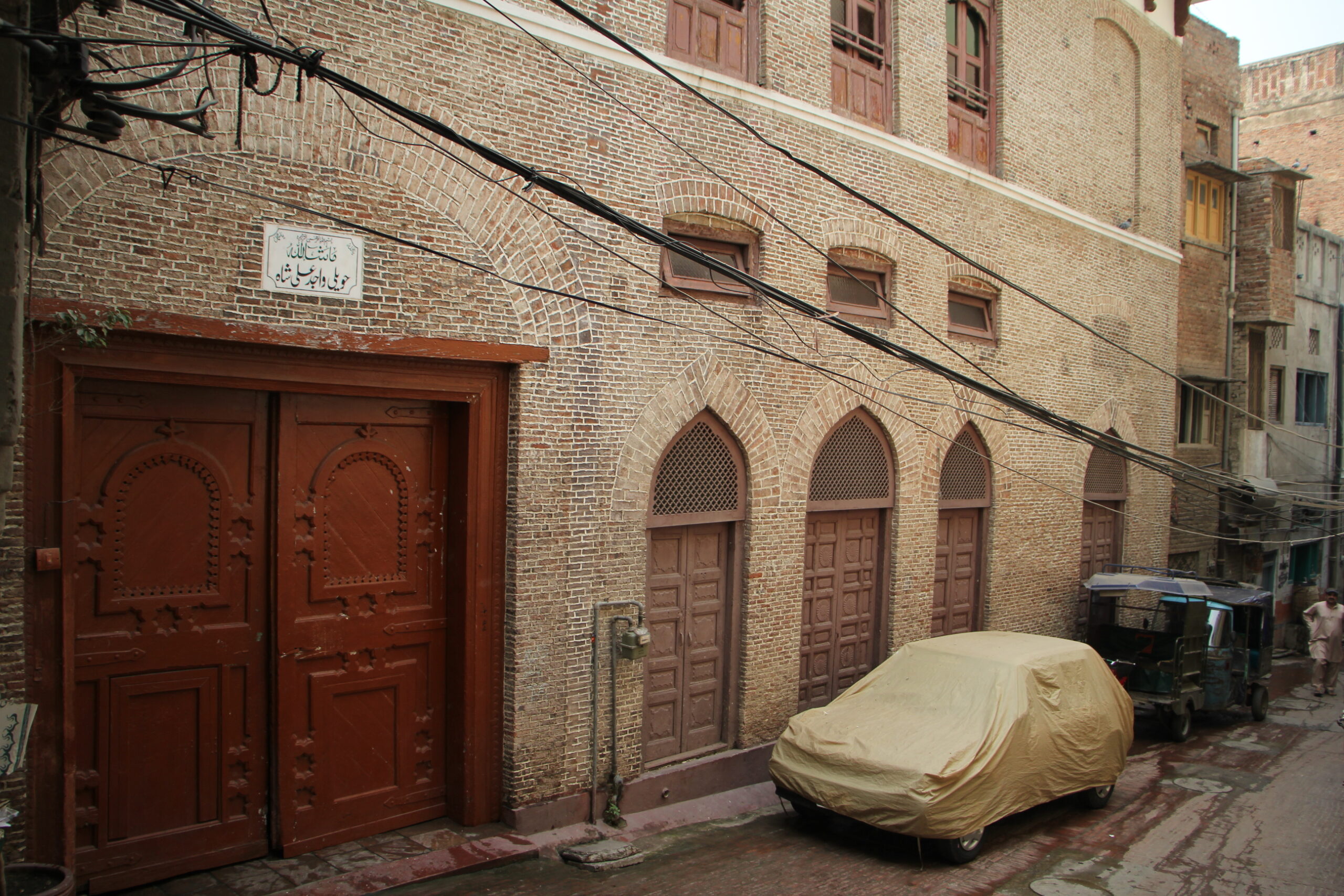
Haveli Wajid Ali Shah, Bhati Gate
This Haveli was the guest house of Faqir Khana Haveli . Faqir Khana haveli which once captured the area of 1 kanal and 13 Marla’s. it belongs to Raja Todar Mal. Raja Todar Mal (Finance Minister of Akbar) was one of the Nou ratans of Akbar Badshah. He was intelligent and a capable Minister of Akbar. When Akbar set Lahore as his capital .His minister’s constructed many havelis in Lahore. In 1730 , when Syed Ghulam Shah who was the father of faqir Ghulam Mohayyu din , came to Lahore from Choonia. He met Governor Lahore Nawab Abdul samad khan with the help of his friend Hakim Abullah Ansari. Nawab Abdul Samad appointed him as Meer Munshi in his court. The haveli of Raja Todar Mal was entrusted to Syed Ghulam Shah as his residence. During Sikh Period , Faqir Aziz ud din ( Chief Secretary & Foreign minister of Ranjit Singh) used this haveli ( haveli wajid ali shah) as a guest house for the visitors. In 1804, After the marriage of Maharaja Ranjit Singh and Moraan Sarkar, construction of a haveli for Moraan was started in Pappar Mandi of Lohari Gate . During the period of construction Moraan stayed temporarily in Faqir Khana Haveli to look after the works of Construction at Pappar mandi. In the decade of 1870-80 when Shiksha Sabha was founded in Lahore. Its congregations were held in the gardens, halls and sitting rooms of this haveli. The first meeting of Corporation was also held in the same haveli. With the passage of time, these haveli’s got devided among its heirs.

Mubarak Haveli
If ever there was a haveli that could be labeled as among the oldest, and also the finest, without doubt it would be Mubarak Haveli, inside Mochi Gate area. It was here that the Koh-e-Noor Diamond was recovered from a trapped Afghan king. This 'haveli' has stories galore, ones that make history so interesting. A colossal ‘haveli’ built by Mir Bahadur Ali, Mir Nadir Ali and Mir Bahar Ali, sons of a well-known 'Tabeeb' and 'Hakeem' during the time of Mughal emperor Muhammad Shah. It took three years to build and when the three brothers moved in, Bahadar Ali's wife gave birth to a son. This was seen as a good omen and the 'haveli' was named Mubarak Haveli. With the start of the Sikh period began years of pillage and looting. Sikh mobs would come and loot whatever they could lay their hands on. The grand Mubarak Haveli remained empty for a few years and people inside the city began to steal the bricks of the western portion of the haveli. It presented a deserted look, prompting Maharajah Ranjit Singh to take it over, for himself and his guests. Afghan king Shah Shuja and his family, who were fleeing from Kabul because of fighting over the Afghan throne, came to Lahore as Ranjit Singh’s guests. The crafty Sikh ruler made them his prisoners and released them only after they gave him the unrivalled Koh-e-Noor diamond.

Haveli Nau Nihal Singh
Nau Nihal Singh's haveli is situated inside Mori Gate. This lofty haveli is reckoned among the most magnificent buildings of the city of Lahore. Nau Nihal Singh used it as his private residence. It contains numerous spacious chambers, halls and balconies. The roofs are decorated with paintings and mirrors, and are worked in gold. The walls are richly and tastefully ornamented with glass and artificial flowers. It is now government property used as Victoria Girls' High School. The haveli, rectangular in plan, is a fairly large building. Its entrance is on the west side and the façade has been divided into two clear sections: one housing the entrance gate, which is profusely decorated and the other is simple but has plenty of fenestration. If there was any decoration on this area it has been destroyed by the ravages of time. The building had a basement and four-storeys above the ground level. The basement is also approachable now. Out of the four-storeys above ground level, two-storeys encompass the whole area, the third-storey is partially crumbled while the fourth-storey stands in the northwestern corner and is called Shish Mahal. Shish Mahal in fact is like the Mughal’s Hawa Mahal or Palace of Winds. Hawa Mahal used to be at the top of the royal buildings where fresh breeze could be enjoyed and at the same time a view of the surroundings could be relished. The Shish Mahal of Nau Nihal Singh’s haveli served these purposes very well.
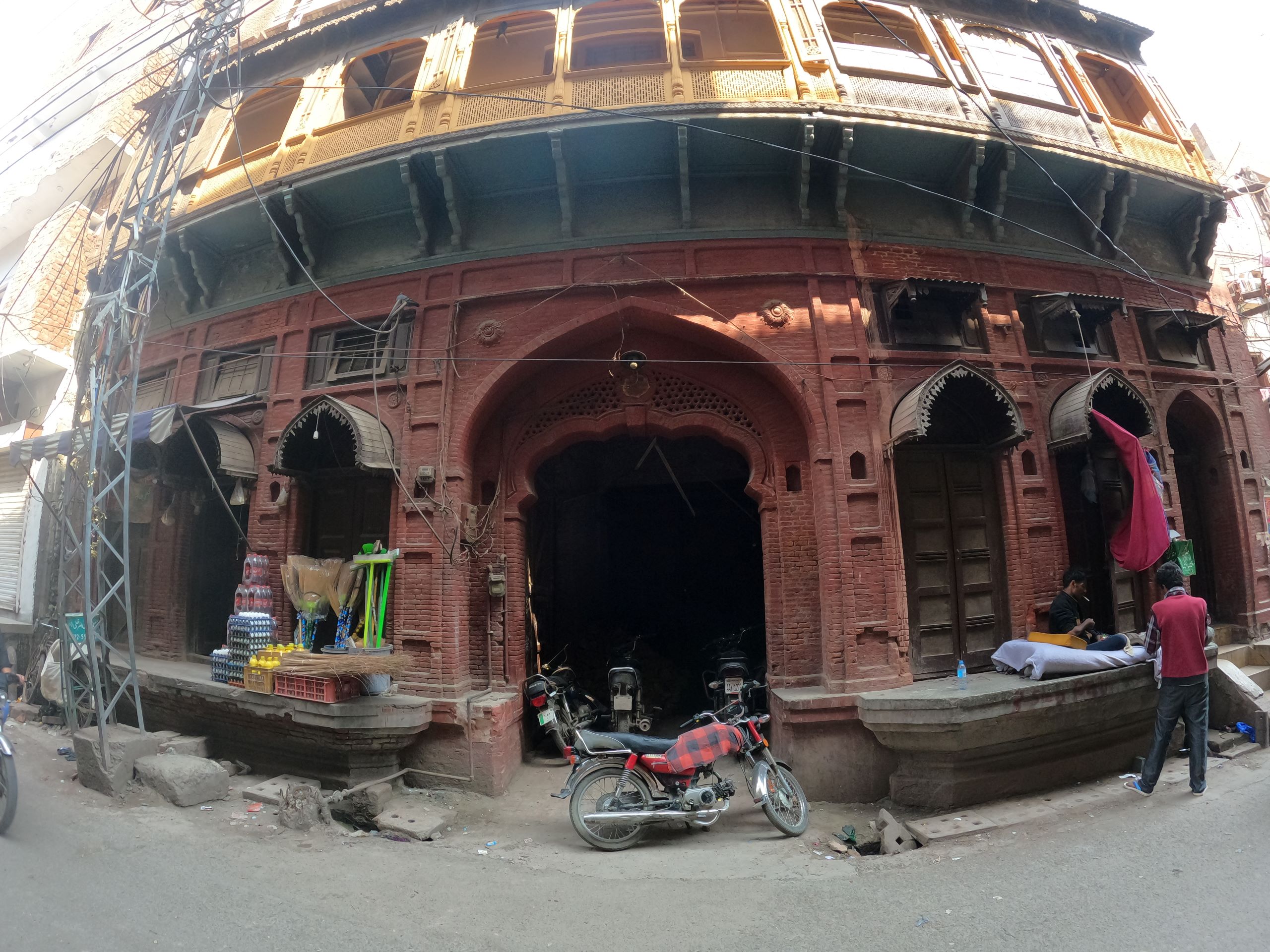
Haveli Qamar Manzil
This haveli is situated in Androon Bhatti gate. This building was constructed by Mr. Qamar-u-Din in 31 July, 1907. There are 20 rooms in this building and 6 families are residing here as a tenants. Around 20 persons are living here. The area of the building is approximately 1 kanal. It’s a residential building. The building is more or less in quite better condition. No major repair works have been done here except occasional cracks filling or white wash. Owner is living outside walled city.
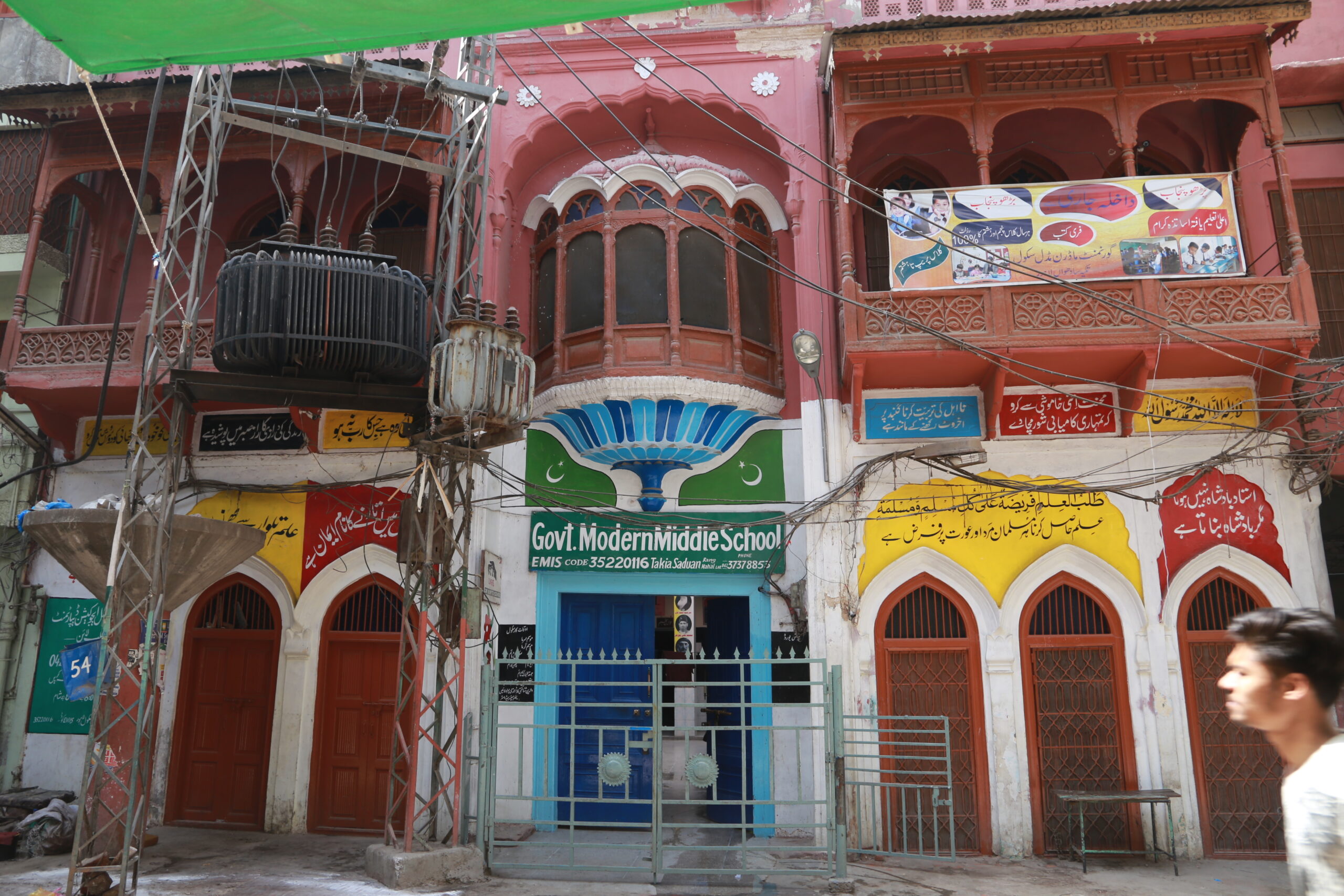
Haveli Mian Khan
Haveli Mian Khan, a massive `haveli` built in Emperor Shah Jahan`s reign by his Prime Minister Nawab Saadullah Khan. It was completed during the reign of Emperor Aurangzeb by the Nawab`s son, Mian Khan, who was then the Governor of Lahore. This grand edifice was spread over two square kilometers, and it was divided into three sections: the women`s quarter called `Zinnan Khana`, the men`s quarter which was called Rang Mahal, and the Qalai Khana, whose walls touched those of Masjid Chinyaanwali.
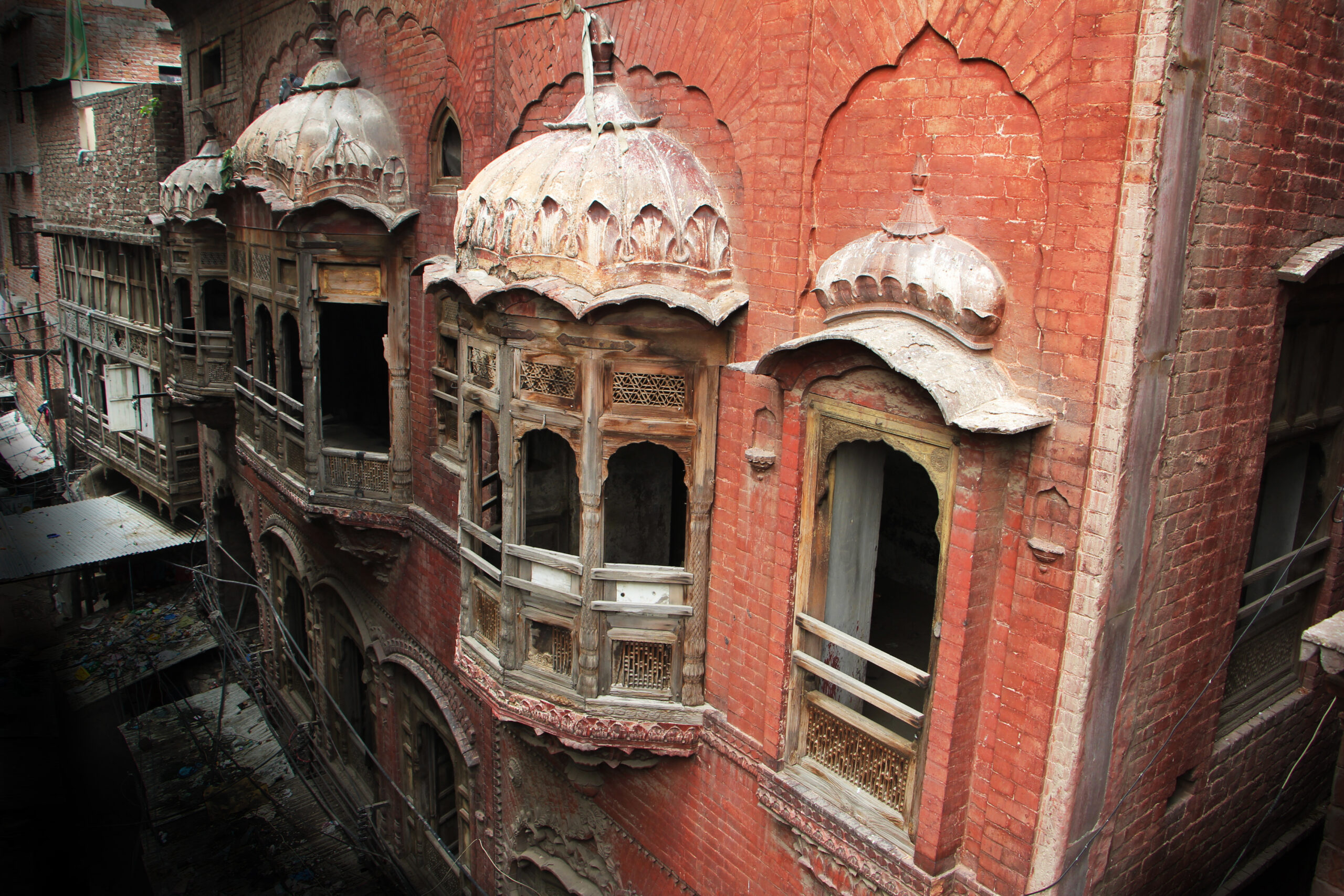
Lal Haveli
Lal Haveli exists in Lohari gate near Awami Bazaar. According to oral history, this haveli was built nearly 150 years before. This building is of British period. When this building was constructed it was consisted of a huge area. But afterwards the building divided into four sharers and each of them separated its portion of building. At present the same building is present in three plots\buildings i.e. D-747, D-748 and D-749. its a 4 storeys building. The Lal Haveli is a residential structure that has one of Lahore’s best preserved cut and chased brick work and plaster moldings on a fair faced brick ground and exquisite wooden Jharokas on the three principal floors. The brick work has been kept painted over the decades with a coat of Hurmuchi, or Red ochre paint, which gave the house its name. There is a local tradition that the haveli was built by the Maharaja of Kashmir for a favored courtesan by the name of Daru. For that reason no. D/749 is also known as Mai Daru’s Haveli. D-749 is renowned as Lal haveli because of its beautiful façade while others are just located by their plot numbers. D-749 is vacated since long because of deteriorated condition. 10 years before work of shoe-manufacturing was being carried out here. Nearly 6 families are residing in all parts of the haveli.
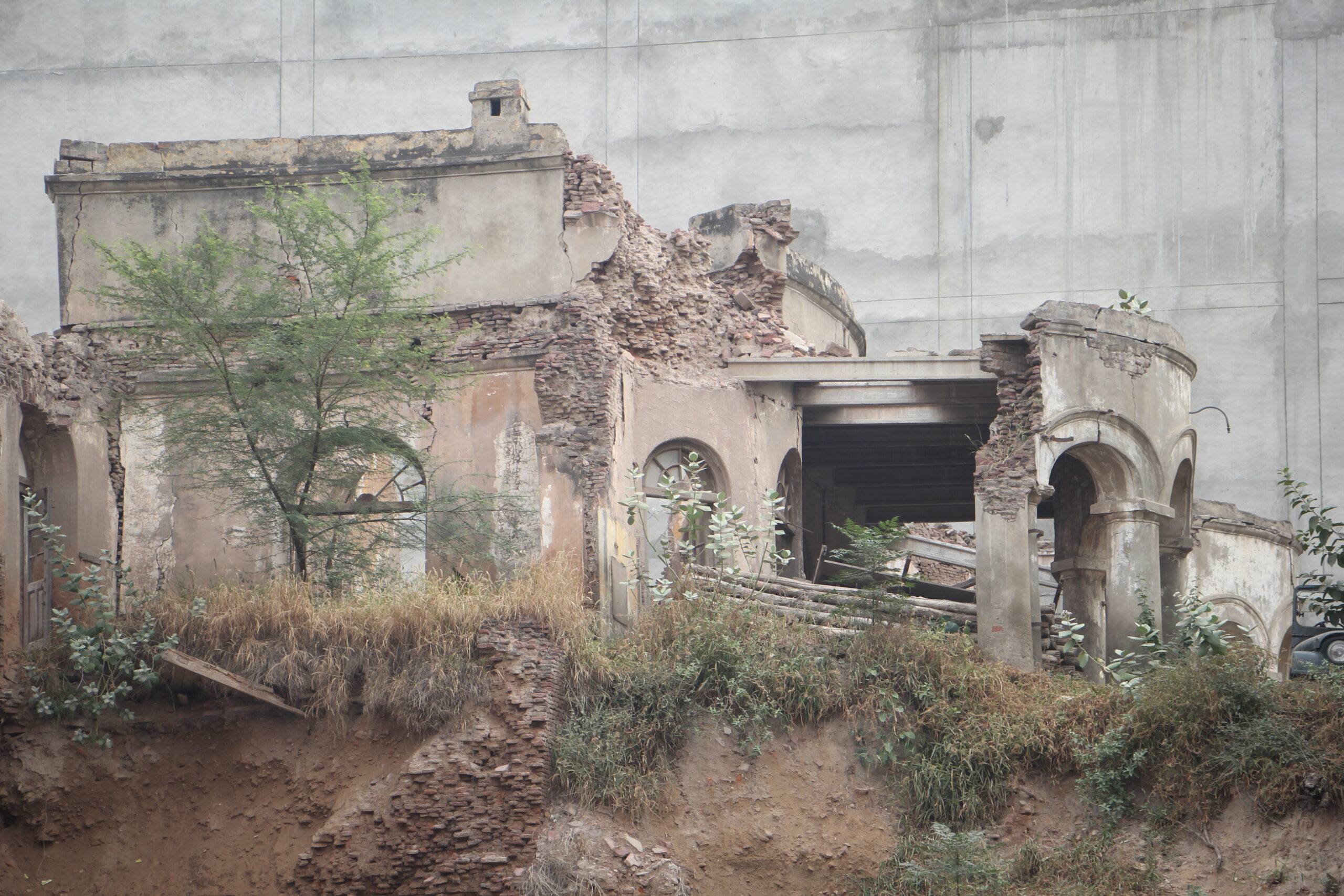
Bangla Ayub Shah
This building is situated inside Kashmiri gate. Ayub ka Bangla was built in Sikh period. In 1849, it was taken over by a chieftain Ayub Shah who came from Afghanistan. He rebuilt the building and later sold it to the afghan Royal’s Chief Shazada Sultan. In 1960 the family sold most part of the property and only one third of this famous Bangla is left. Bangla Ayub Shah was important as the “secret escape tunnels” emerged from there and headed towards river Ravi and Delhi Darwaza. It was a three storey building having two basements and a ground floor. Major portion of the building has fallen. The building was built with small size bricks. The roofs are wooden composed of beam and batten system. There is a Roman style veranda on the front side. The exterior and interior is finished with lime plaster.

Haveli Mian Sultan
Mian Sultan, a Kashmiri, by caste worked as a manufacturer of soap in the time of the Sikhs. He was also an expert in the art of wrestling. During the time of the British he became a contractor for public works and his gains from this source were enormous. He became a man of much wealth and from sultan came to known as Mian Mohammad Sultan, a contractor. He was the destroyer of numerous old buildings and mausoleums and the builder of edifices as numerous as those he demolished. At present, a haveli in Delhi gate bazaar, Landa Bazaar and Serai Sultan were constructed outside Delhi gate. This haveli exists in Delhi gate bazaar near Chitta Gate. It’s a historical building and remarkable building of its time. At the upper storey of the building there is a Shish Mehal that resembles to the Shish Mehal of the Lahore fort.
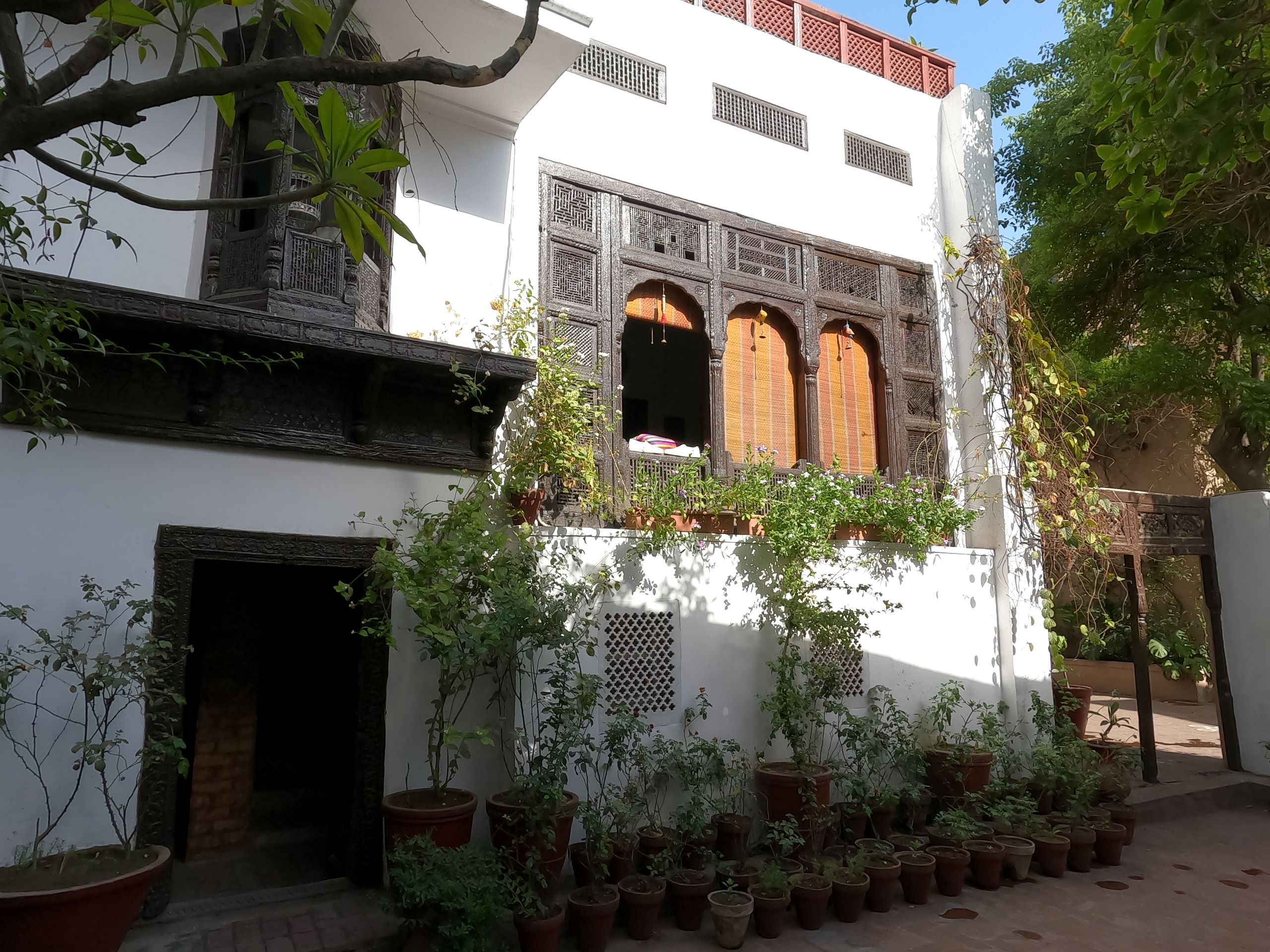
Barood Khana Haveli
At the edge of Heera mandi stands a magnificent Barood Khana Haveli. The haveli is located between Pani Wala Talab and Langay Mandi Bazar. This haveli is a magnificent landmark, which is commonly known as Mian Salahuddin’s Haveli. Once the biggest arsenal in Lahore, the 17th century Mughal style haveli has now become the venue for glitzy and cultural evenings and is a haven for the city’s aesthetically charged, thanks to Mian Yousaf Salahuddin, undoubtedly the cultural guru of Lahore. Mian Yousaf Salahuddin, popularly known as Yousaf Salli, is the grandson of Allama Muhammad Iqbal and Mian Amiruddin. Talking about the historical significance of the haveli, he said it came into prominence in the Ranjeet Singh’s period. It was built for the Sikh army’s commanding general around 230 years ago and was more of a corps commander house. It was the biggest arsenal outside Lahore Fort and built directly facing the fort as it was the tradition that arms, ammunition, gun powder, etc., had to be kept with the army chief. Part of the haveli was used as the general’s residence while the rest was used as offices and as an ammunition depot.

Haveli Raja Dhiyan Singh
Situated near Heera Mandi, this Sikh-era haveli originally covered an area of 46 kanals, but has now shrunk to 2 kanals, with the majority of the surrounding area occupied/purchased by the public. Prior to its downsizing, it was an attractive building with a cellar. What remains is the court of Raja Dhiyan Singh, one of the brothers of Jamadar Khushal Singh.
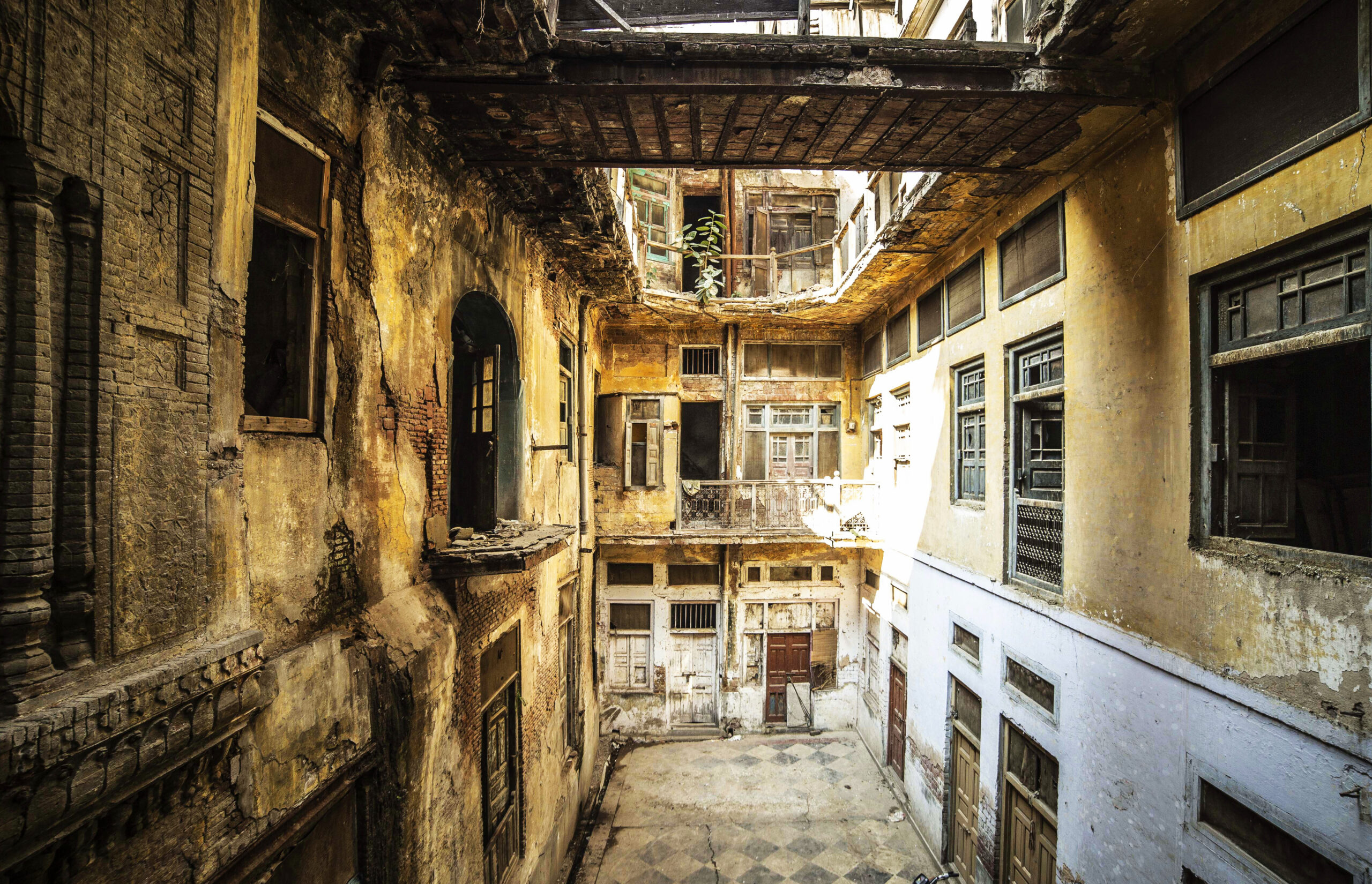
Noorie Manzil / Noor haveli
This haveli exists in Mohalla Pir Shirazi near Chowk Matti. This haveli is of Mughal period and occupied the area of 27 marla’s and there are nearly 32 rooms in this building. After partition the family shifted to this haveli is residing here to present. No repairments have been made in this structure. Currently, there are two sharers of this building. At ground floor 3 tenants are residing and doing work of shoe manufacturing.
in our city
region covers
garden land
Ownership
Latest Publication
The news about recent activities for needed peoples.
